©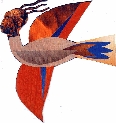 Collectors of Che Baraka - Visual
Artist
Collectors of Che Baraka - Visual
Artist
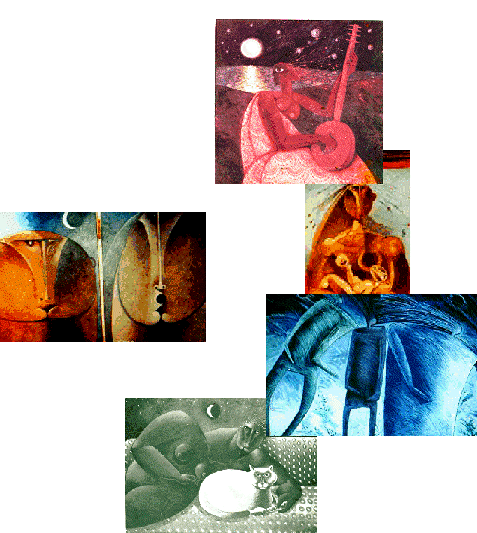
Our primary interest as an
organization is with supporting the artists that are alive
and actively producing quality visual art creations within
our communities ... those artists right around us ... those
artists that we can know personally and those artists that
can inform us, through their works, on how our culture
changes and how it stays the same. Artists, that are
experiencing what you experience, and are giving back
through their talents myriad images of how those experiences
can be interpreted. We plan to support artists by promoting
within the African American
communities the act of collecting art for cultural reasons -
art appreciates in value, if it is treasured and respected,
so the increase in economic value does not need promotion,
it is inherent.
Our organization has no intentions of
dictating any particular styles, subjects or formats for
collecting. Visual artists, like all other artists, always
have to catch an audience’s attention through their mastery
of craft, their creativity and the clarity of their visual
messages. We are cognizant that some of our artists have
been formally trained at the best schools and others are
self taught, and all are compelled by internal forces to
produce images. We need images just as we need songs.
so thour communities the number of
visual artists is on the same order as our musicians, poets,
singers, actors, dancers! Yet, most of them have not
received during the early phases of their careers a modicum
of public recognition from their communities and only a few
will be recognized at all, during their active careers, by
the larger society. This is in spite of the facts that many
have decades-long histories of continuously producing works
of high quality and that their works have been quietly
acquired (some would say at undervalued prices) over those
years by collectors from within and outside of the
community.
Our organization of collectors was formed to be one
identifyvisual artists that we findactivitiesartistic merit
and of cultural significanceexpectations are that the
artists that get early recognition and support from their
communities will international mastery artists have doneof
the first voices in the community to , promote, honor and
validate those , through our collecting , are producing
works of exceptional . Our better navigate the path to
national and recognition of their true artistic ... just as,
for example, our musical . The people that that has come out
of our
 community. Don
community. Don
sparted that night with a
greater appreciation of the importance of collecting the
works of local artists but without any collective agenda.
In February 2003 the Art Institute of
Chicago(AIC) presented, A Century of Collecting
AfricanAmerican Art, a show of its permanent
collection of AfricanAmerican art. I
attended a mid-day panel discussion at the AIC to hear what
the artists that were in the collection had to say. My
simple mind thought they would be proud to be in the company
of Tanner, Motley, Barthe, Catlett, etc. However, I was
shocked and perplexed by the acid statements and the biting
criticism of the AIC that some of the artists made from the
panel. I left confused .
.
 Later that day, I attended an art exhibition at
the South Shore Cultural Center that was featuring some of
the artists in my collection. As soon as I arrived an artist
introduced me to Nathaniel McLin, an art critic and radio
art show host at Kennedy-King College. Mr. McLin had also
been at the AIC panel discussion. I asked what was happening
on that panel. He said that art institutions and museums
like AIC do not pay much attention to what artists have to
say, so no damage was done. He said that their primary focus
is on what collectors have to say and definitely on what
collectors do ... like lend, donate and bequeath artwork. He
said that a museum is just an association of collectors. The
lightbulb went on in my head!
Later that day, I attended an art exhibition at
the South Shore Cultural Center that was featuring some of
the artists in my collection. As soon as I arrived an artist
introduced me to Nathaniel McLin, an art critic and radio
art show host at Kennedy-King College. Mr. McLin had also
been at the AIC panel discussion. I asked what was happening
on that panel. He said that art institutions and museums
like AIC do not pay much attention to what artists have to
say, so no damage was done. He said that their primary focus
is on what collectors have to say and definitely on what
collectors do ... like lend, donate and bequeath artwork. He
said that a museum is just an association of collectors. The
lightbulb went on in my head!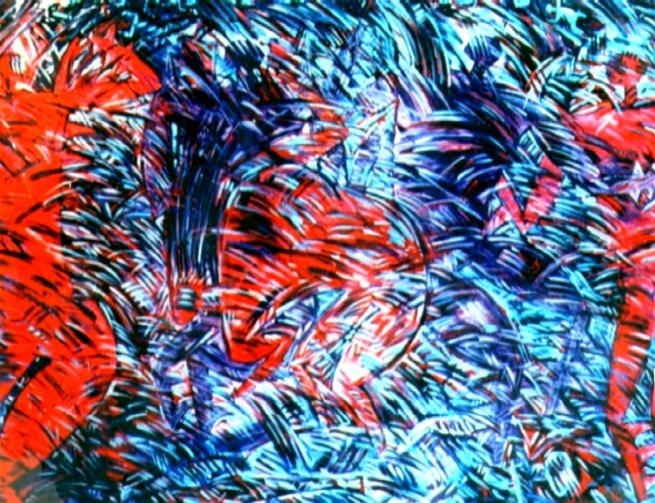 Form an association of
art collectors and the world will listen.
Form an association of
art collectors and the world will listen.
With that insight, I brought together again Carol Briggs,
Joan Crisler and Dan Parker and by May 2003 we had formed
Diasporal Rhythms. We quickly organized a three day event
called the “Collectors’ Invitational” that was held at the
beginning of the October 2003 Chicago’s Artist Month. For
that event we ‘invited’ five artists, selected by us in a
super secret ballot from those artists in our collections.
We asked them to participate in an exhibition at the South
Side Community Art Center showing their latest works. And we
asked for their cooperation in the production of a catalog
for that show. On the first day we sponsored an honoring
ceremony and opening reception, free to the public, for the
artists - Marva Pitchford Jolly, clay artist; Makeba Kedem
DuBose, painter; Adedayo (Dayo) Laoye, painter; Dale
Washington, painter;
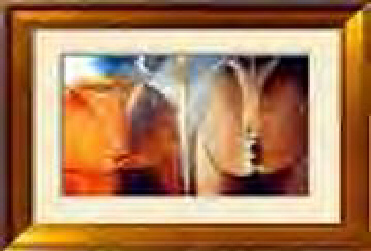 and Julian Williams, painter. On the
second day we hosted a roundtable discussion that brought
together a large and very diverse group of
African American artists and collectors. There was a
very stimulating discussion on the development of productive
relationships between artists and collectors in Chicago’s
African American communities. On the third day the
members of Diasporal Rhythms opened our homes and the Dixon
Elementary School for a tour ...
and Julian Williams, painter. On the
second day we hosted a roundtable discussion that brought
together a large and very diverse group of
African American artists and collectors. There was a
very stimulating discussion on the development of productive
relationships between artists and collectors in Chicago’s
African American communities. On the third day the
members of Diasporal Rhythms opened our homes and the Dixon
Elementary School for a tour ... showing the works, collected over the
years, of the honored artists. It was quite a success. The
catalog for that show is presently in the final draft before
printing.
showing the works, collected over the
years, of the honored artists. It was quite a success. The
catalog for that show is presently in the final draft before
printing.
The former governor
of New York
State, Mario M. Cuomo, speaking of the African-American
visual artist, Che Baraka, his work as a painter and
cultural contributions in the visual arts to the people and
communities of New York stated:
"Che Baraka, to my thinking,
belongs to that extraordinary order of human beings, namely
those that believe one person can change the world.
Moreover, the evidence for this is provided in his
accomplishments of the past twenty-five years.
He (Che
Baraka) has taken that immeasurable element of civilization's
activities, the visual arts, and welded them as a viable instrument for
social change and human empowerment.
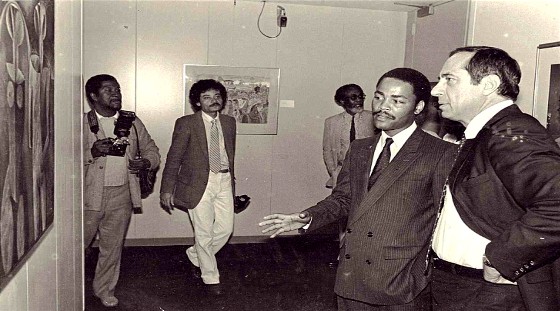
As a
profoundly gifted and accomplished visual artist and as an immensely
innovative arts administrator, he has affected, in the most positive
sense, the lives of countless individuals. And for the residents of our
marginalized and disenfranchised neighborhoods, through the community
arts organizations for which he provided outstanding stewardship; he
made the 'assumed impossible'---obviously possible."
---
Mario M. Cuomo, Chairman, New York State Awards in the Visual Arts,
Plaza Hotel, New York, December 12, 1995